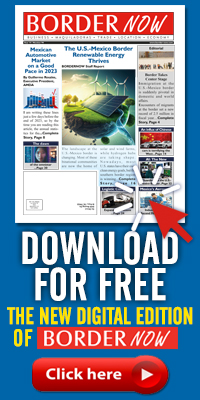New NAFTA rules lead to consider most-favored-nation tariff, says report
Warning: foreach() argument must be of type array|object, bool given in /home/mexiconow/public_html/sites/mexiconow/wp-content/themes/mexiconowwpnew/single.php on line 253
The new rules of origin for the automotive sector in the preliminary trade agreement between Mexico and the United States increase costs so much that, in some cases, it might be better for the industry to pay the Most Favored Nation (MFN) tariff than to comply with the provisions of the revamped NAFTA, says a note from Citibanamex, Citigroup's Mexican subsidiary.
According to the report, 10% of regional production already pays the MFN tariff instead of meeting NAFTA requirements. “Consequently (...) increasing the rules of origin beyond 75% would intensify this tendency, creating the risk that the policy will fail,” the report (PDF) cites.
On the bright side, the renegotiation eliminated the risk for a high percentage of the Mexican automotive production to be subjected to tariffs of the so-called section 232, says the note from Mexico’s second-largest bank.
The Mexican team managed to obtain some kind of insurance so that 2.4 million vehicles will be exempt of section 232 tariffs as long as they comply with the new rules of origin. The figure is higher than the 2.3 million vehicles that Mexico exported to the U.S. last year, which means that the current export levels are 100% covered.
The agreement also increases from 62.5% to 75% the content level manufactured in the NAFTA region that a light vehicle must have so it can to be exported tariff-free to any of the three countries that make up the block.
In addition, at least 40% of the total content of a vehicle must be produced in areas where wages are at least US$16 per hour, that is, in the U.S. or Canada.
This measure will not be so difficult to comply since, according to data from the Mexican Auto Industry Association (AMIA) and Scotiabank, it is estimated that the U.S.-made content in vehicles manufactured in Mexico and exported to the U.S. was already between 37% and 39.5% in 2016.
Worth mentioning is also that the definition of regional content will now include activities such as Research and Development, Marketing and Sales, although there will be a cap of 15% of the total content in the case of light vehicles and 20% in the case of pickups.
An additional restriction is that at least 70% of the steel used by automobile manufacturers should originate within the NAFTA region. In this regard, Citibanamex considers that this rule of stricter origin will imply additional costs in competitiveness and/or prices for consumers in the region.
However, the changes are not expected to affect Mexico's macroeconomic outlook of 2.3% GDP growth for 2018 and 1.9% in 2019, the bank says.
The modified NAFTA agreement still needs to be approved by Canada.
MexicoNow
Related
- Mexico, US resume trade talks in search of final deal, with or without Canada
- Exports cap for Mexico-made cars, well above current capacity, says Guajardo
- Mexico, US reach preliminary trade deal clearing path for Canada to rejoin NAFTA talks





